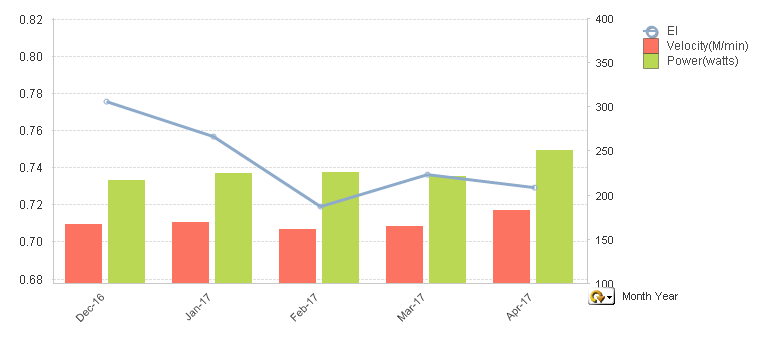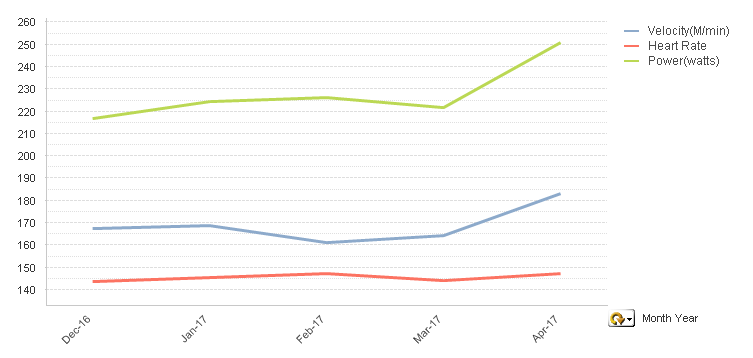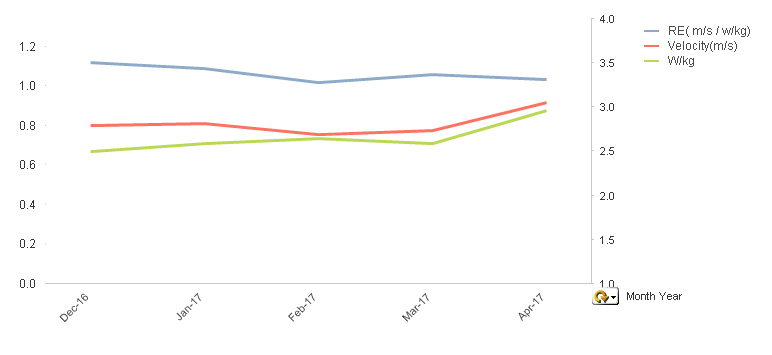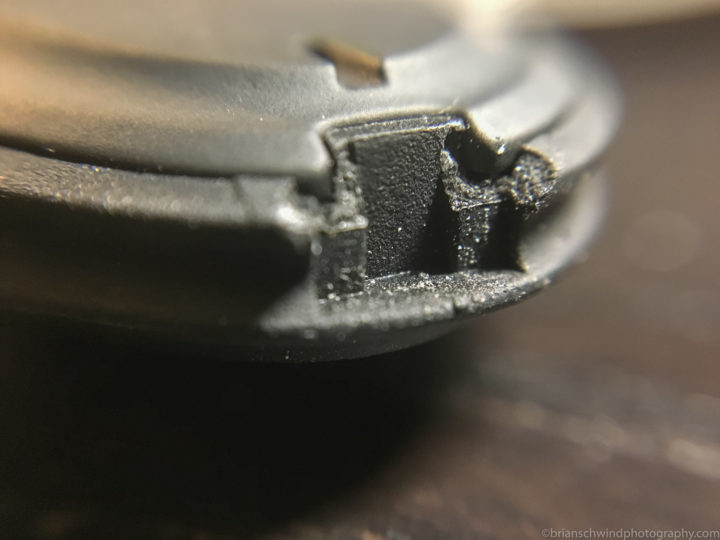When I first heard that there were some companies coming out with power meters for running, I couldn’t wait. I love to be able to objectively quantify my workouts. Knowing how this works for cycling, being able to add this to running would be a bonus. Then I thought about it a bit and realized it would probably be best to hold out a bit. The technology was new and Still evolving. Also, none of the training watches or software would pick it up anyway without some hacking involved.
I had played around a little bit with running power by using my Cyclops PowerCal Heart Rate Monitor which was kind of interesting. The problem was I had to run with my Garmin in biking mode all the time. Not something I really wanted to do since I would miss out on the other running-specific data. Then Garmin came out with the HRM-Runs’ running analytics which I thought was better data than just having power.
The Stryd Running Power Meter
The Stryd unit seemed to be the one that was getting the most attention and it had gone through a few iterations of its product already. It started out as a little widget that you clip on your shorts, then it turned into a heart rate strap and now it is a little foot pod. It finally seemed like they were stabilized a bit, so I decided to “pull-the-trigger” and order one. It took a few months to arrive.
I am glad I waited because the HR strap looks like it sticks out a bit and would look very strange bulging out of your shirt. One advantage of the HR strap one was that it measured power in 3 planes, vertical, horizontal and lateral, whereas the footpod only measures the first two. I don’t think this is a big deal for me since I think I am a pretty efficient runner thanks to my Chirunning practice.
I have had the Stryd footpod now for a few months now and feel I have some initial impressions of it. I say few months because I had to send it back to be replaced already since the tab where it clips to its back clip broke off. It doesn’t seem like there is much really to grab onto there. While it still held in place on my laces, I was a little leery it was going to fall off sometime. The folks at Stryd quickly replaced the unit and got me back and running again. Pun intended.
Collecting the Data
I started reading Jim Vance’s “Running with Power” book while I was training with the unit. I had already read Vance’s previous book “Triathlon 2.0” which I really liked, but I felt the Running with Power book was not quite as good. Most of it was just a re-hashing of the other books’ concepts on Power for cycling. While there were a few new metrics, namely Efficiency Index or EI, that are different from cycling, I feel this book is a little premature at this point since the technology is still being figured out. Hopefully the “Running with Power 2.0” will be better.
One of the recommendations in Vance’s book was to just start running with the power meter and start collecting data. For the next couple of months, I just ran with it and checked in on the numbers post-mortem of my runs.
After finally collecting several months of data I decided it was now time to analyze it. Well despite the fact that Jim Vance’s book stressed how essential the Efficiency Index (EI) metric was, none of the training sites, except for SportTracks even implemented it! Not even Training Peaks or Stryd! This is even though they published blog posts(here and here are just a couple examples) about Vances’ book and the metric itself. WTH? Also, SportTracks implemented only for individual activities so there was no way to track this metric over time.

Analyzing the Data
So what is a data geek to do? Start tracking it myself I guess. I started by downloading my workout summary data from Training Peaks and then crunching the numbers in my favorite analysis tool, Qlikview. Below is the running results for the current training season in regard to Efficiency Index(EI). The formula is V(M/min)/rPwr(watts).
Efficiency Index EI by Month

Efficiency Index Components by Month

As you can see in the first graph, my EI has dropped a bit from December to February and then pretty much leveled out from there. Is that good or bad? Pretty hard to tell without looking at the components of it. Personally, I think EI, by itself, is pretty meaningless.
February was pretty much a wash month for me. I was pretty sick for a solid 2 weeks of it and spent the next couple weeks getting back to normal again. Looking at my average velocity for each month it has been increasing steadily, which I would say is good. My power numbers have also gone up too. April increased significantly due to having a 4-mile and a half-marathon race in there. So if both the components are increasing, then I am getting faster and stronger I guess. This leaves EI pretty much staying the same. See what I mean by EI being meaningless by itself now?
One other variable is that my weight has dropped a bit during the training months. I was surprised that this didn’t affect EI at all. I would think I would have gotten faster while using fewer watts and am not seeing that happening here either.
Looking my average heart rate versus the increase in speed and watts does show that hasn’t changed too much. This would indicate that despite those increases in output, my aerobic “engine” doesn’t appear to be increasing. So I guess I am getting more efficient.
Runner Effectiveness
Another running power metric has recently come onto the scene called Runner Effectiveness. This is outlined in a recent post by Steve Palladino on the Training Peaks Blog. This metric, while similar to Vance’s EI metric, uses Watts/kg in the denominator instead which brings the athletes weight into the mix. It also uses Meters/second for velocity in the numerator as opposed to Meters/minute in the EI metric.
Running Effectiveness = (m/s) / (w/kg)
Palladino shows how this metric can be calculated in Training Peaks’ WKO4 client software program as well. I actually have a copy of this program haven’t had a chance to really delve into it yet. Perhaps the EI metric can also be calculated here too.
For now, I calculated this one too in my Qlikview app. As you can see below it pretty much shows a similar trend, just not quite as drastic as EI above.
Runner Effectiveness

Summary
Running with power is still new territory and there is still some data gathering and analysis that needs to be done to get anything valuable out of it. One thing that is valuable now is that it is a good way to quantify your individual workouts for calculating TSS. Is it necessary though? I don’t think so. It is a lot of money for something that is just a “nice to have”. I think training with pace, heart rate and time is still just as good and will save you a couple hundred dollars. If you have one of the watches that track the new running dynamics metrics, I think that they are more worthwhile for those looking to improve their efficiency. High cadence, minimal ground contact time and vertical oscillation will help you track that.


